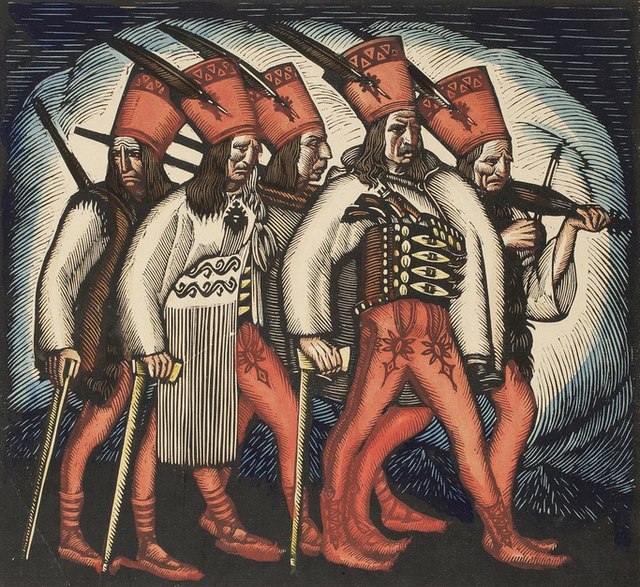Goralenvolk was a geopolitical term invented by the German Nazis in World War II in reference to the Goral highlander population of Podhale region in the south of Poland near the Slovak border. The Germans postulated a separate nationality for people of that region in an effort to extract them from the Polish citizenry during their occupation of Poland's highlands. The term Goralenvolk was a neologism derived from the Polish word Górale commonly referring to the ethnic group living in the Beskid and Tatra mountains. In an attempt to make the Gorals collaborate with the SS, the Nazis proclaimed that they were of Germanic descent, and were thus worthy of Germanisation and separate treatment from other Poles.
Meeting of Governor Hans Frank in Zakopane with leaders of his Goralenvolk in November 1939
Peasant Goral couple depicted in a General Government stamp printed in 1944
The Gorals, also known as the Highlanders are an ethnographic subgroup primarily found in their traditional area of southern Poland, northern Slovakia, and in the region of Cieszyn Silesia in the Czech Republic, where they are known as the Silesian Gorals. There is also a significant Goral diaspora in the area of Bukovina in western Ukraine and in northern Romania, as well as in Chicago, the seat of the Polish Highlanders Alliance of North America.
A Goral with bagpipes from the region of Podhale in Poland
Zbójnicy, colored wood engraving by Władysław Skoczylas
Gorals from Zakopane (1967)
Young Gorals of the Beskid Mountains (Żywiec)






